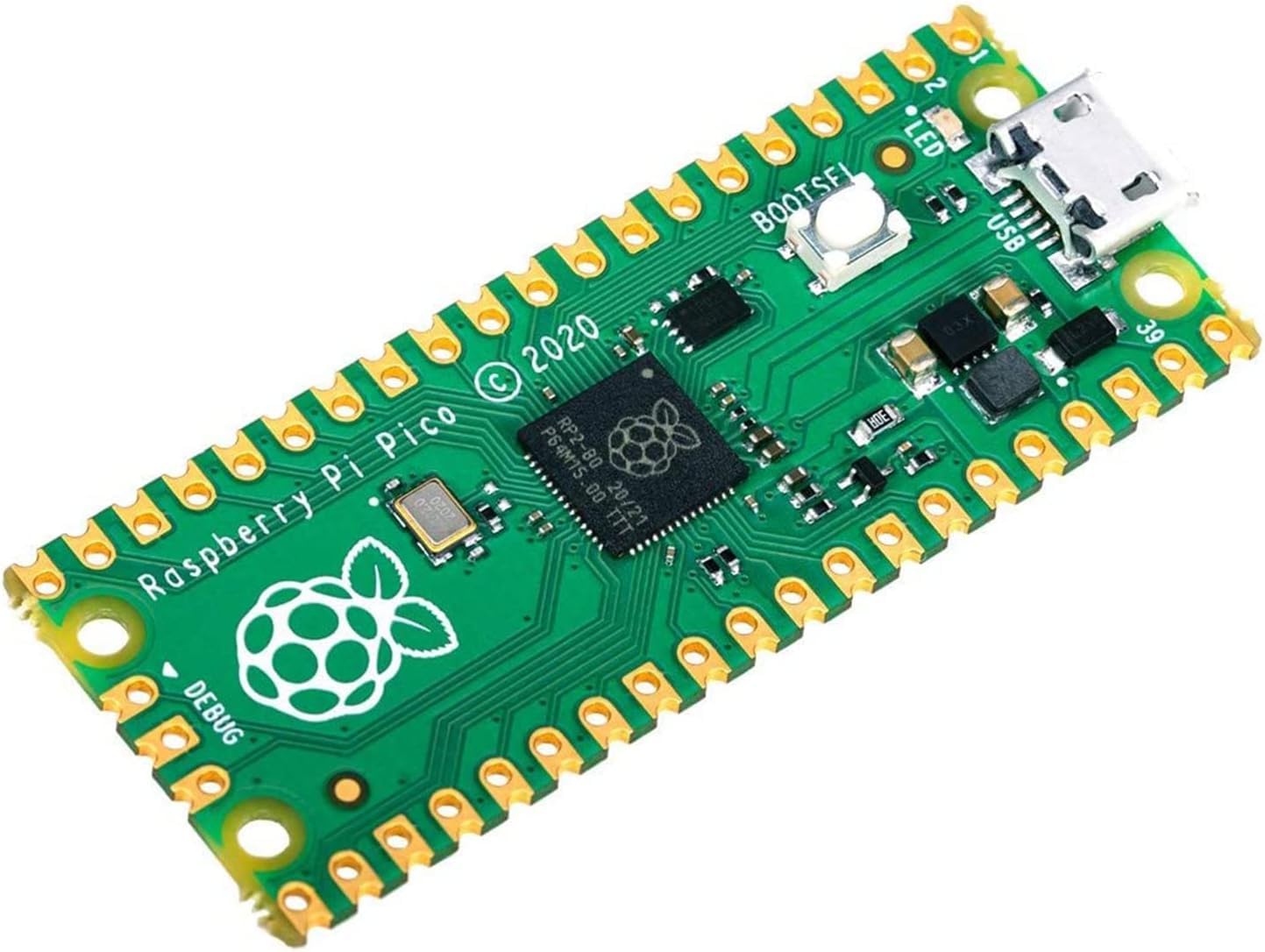Introduction
In the ever-expanding world of microcontrollers, two powerful opponents are attracting the interest of developers and fans alike the ESP32 and the Raspberry Pi Pico.
Both devices have unique characteristics, but one frequent question remains. is the ESP32 more powerful than the Raspberry Pi Pico? In this thorough investigation.
we will go into the complicated workings of each platform, comparing their features, performance, and use cases to find which one is the more powerful choice.
1. What is ESP32
Espressif Systems developed the ESP32, a powerful microcontroller that smoothly mixes Wi-Fi and Bluetooth features with a dual-core processor clocked at 160 MHz.
Its architecture includes a dual-core Tensilica LX6 CPU, which not only increases computing capability but also allows for effective multitask across a wide range of applications, from IoT devices to robots.

2. Highlights of the ESP32
1. Dual-core CPU:
The ESP32’s dual-core Tensilica LX6 processor is a differentiating feature, enabling parallel processing and better performance, particularly in applications that require multitasking capabilities.
2. Wi-Fi and Bluetooth:
Apart from its processing power, the ESP32’s integrated Wi-Fi and Bluetooth connectivity are crucial for projects that require smooth communication with various devices and networks, making it a top choice for IoT fans.
3. Many GPIO Pins:
The ESP32 has a surprising number of GPIO pins, giving developers the freedom to connect a variety of sensors, actuators, and accessories. This surplus makes it ideal for complex projects requiring a wide range of inputs and outputs.
4. Wide Terminal Support:
The ESP32 supports a variety of communication protocols, including I2C, SPI, and UART, making it compatible with a large range of sensors and devices. Because of its flexibility, it is used in a wide range of applications.
3. what is Raspberry Pi Pico
On the opposite hand, the Raspberry Pi Pico marks the Raspberry Pi Foundation’s entrance into the microcontroller industry.
Although its small size, the Pico is a powerful device, powered by a custom-designed RP2040 microcontroller.
with dual ARM Cortex-M0+ cores that provide both performance and efficiency targeted to a wide range of applications.

4. Key Features of the Raspberry Pi Pico
1. Dual-core ARM Cortex-M0+:
The Raspberry Pi Pico’s dual-core ARM Cortex-M0+ processor works at 133 MHz, creating a balance between power efficiency and performance that makes it ideal for a variety of microcontroller applications.
2. Programmable I/O:
One of the Pico’s unique characteristics is the Programmable Input/Output (PIO) state machines. This unique technique enables high-speed and easy I/O operations, giving developers a distinct tool for customization and optimization.
3. Low-Cost Affordability:
The Raspberry Pi Pico stands out for its cheap pricing, making it a tempting choice for applications with a limited budget. With its low cost, it provides high-quality results, making it a tempting option for a wide range of users.
4. MicroPython Support:
The Pico supports MicroPython, a version of the Python programming language developed specifically for microcontrollers. This support streamlines the development process, particularly for the people who are already comfortable with Python, and makes it more accessible to a wide range of developers.
5. Comparing performance between esp32 and Raspberry Pi Pico
1. Dual-core processors:
- ESP32: Powered by dual-core Tensilica LX6 processors.
- Raspberry Pi Pico: Has two ARM Cortex-M0+ CPUs.
2. Clock Speed:
- ESP32: ESP32 runs at 160 MHz.
- Raspberry Pi Pico: Raspberry Pi Pico operates at 133 MHz.
3.Processing Capabilities:
- ESP32: Through a increased clock speed and dual-core construction, the ESP32 succeeds at completing compute-intensive tasks rapidly.
- Raspberry Pi Pico: Enables decent efficiency while balancing battery life with computing power.
4. Project-Specific Needs:
- ESP32: ESP32 is good for applications that require a lot of computing power, like real-time data processing or complicated calculations.
- Raspberry Pi Pico: Because of its cheap cost and two ARM processors, this is a tempting choice for projects on a limited funds.
6. The ESP32 and Raspberry Pi Pico’s connectivity and components
ESP32:
- Bluetooth and Wi-Fi are integrated for easy networking.
- Suitable for wireless communication projects and IoT applications that require access to the internet.
- A larger quantity of GPIO pins enables additional connections to actuators, sensors, and accessories.
Raspberry Pi pico:
- It lacks built-in connection facilities, however it does use Programmable Input/Output (PIO) for numerous communication choices.
- Personalized interactions using a wide range of connecting options.
- New PIO state machines provide fast and economical I/O operations, offering an original method for GPIO management.
7. Development Ecosystem for ESP32 and Raspberry Pi Pico
ESP32:
- Strong and active community support.
- Plenty of documentation and libraries.
- Easy interaction with the Arduino IDE makes programming easier for individuals who are familiar with Arduino.
Raspberry Pi pico:
- Benefits from the growing popularity of the Raspberry Pi ecosystem.
- Strong community support and plenty of resources.
- Developers can use their current knowledge of Raspberry Pi and Python.
- Supports MicroPython, which provides a user-friendly programming platform for both beginners and Python experts.
Summary
The question of whether the ESP32 or Raspberry Pi Pico is more powerful is complicated. The ESP32, with its faster clock speed, more GPIO ports, and built-in connectivity. glows in situations that require powerful processing and wireless connections.
On the other hand, the Raspberry Pi Pico’s inexpensive price, unique PIO, and compatibility with the Raspberry Pi community make it a good choice for low-budget applications . and those that are interested in using existing knowledge.
Finally, the decision between the ESP32 and Raspberry Pi Pico’s is based on the project’s particular needs, the developer’s experience with each platform, and the available funds.
Both microcontrollers have outstanding skills, which open up fresh opportunities for innovative and imaginative projects in the area of embedded systems.
Both the microcontroller environment develops, the ESP32 and Raspberry Pi Pico’s offer excellent examples of the various and dynamic options accessible to developers and fans equally.
Linked articles
1. Home Automation using Arduino and hc-05 Bluetooth module
2. What Microcontroller Used MicroPython?
3. ESP32 with Micropython to control electrical devices using a relay
4. How AI and IoT Impact Daily Life
5. Advantages And Disadvantages Of ESP8266 Wi-Fi Module
6. Is ESP8266 better than ESP32?






2 thoughts on “Is ESP32 more powerful than Raspberry Pi Pico?”